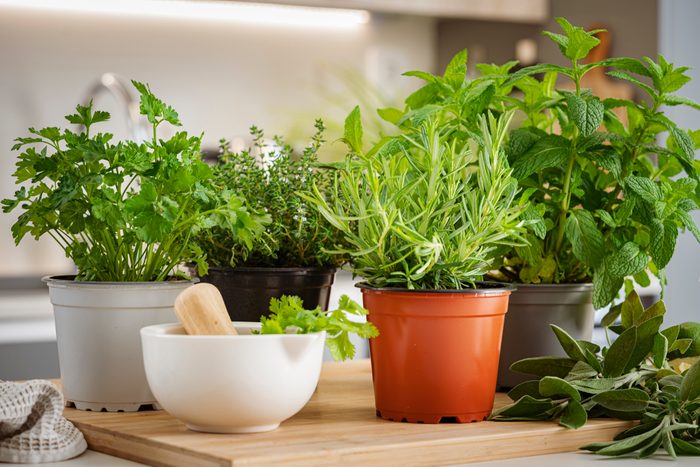
Plants with extra benefits
If you’re a plant parent, we probably don’t have to tell you about the benefits you reap from keeping your horticultural brood around. Plants are pleasing, soothing and great company—in fact, one 2022 public-health study on the effects of indoor plants found that people who spent time around indoor greenery experienced optimal relaxation and cognitive function.
Anytime you want to take your plant-raising game to the next level, consider another potential advantage: Some plants can actually help you heal. According to Lauren Haynes, a clinical herbalist who trained at the Appalachian Center for Natural Health, “a simple, safe plant is such an easy way to care for yourself and your family.”
Haynes and other plant-biology specialists list the medicinal indoor plants you can grow at home to get even greater benefits from your plant-raising passion.
Get Reader’s Digest’s Read Up newsletter for more plant tips, humor, cleaning, travel, tech and fun facts all week long.
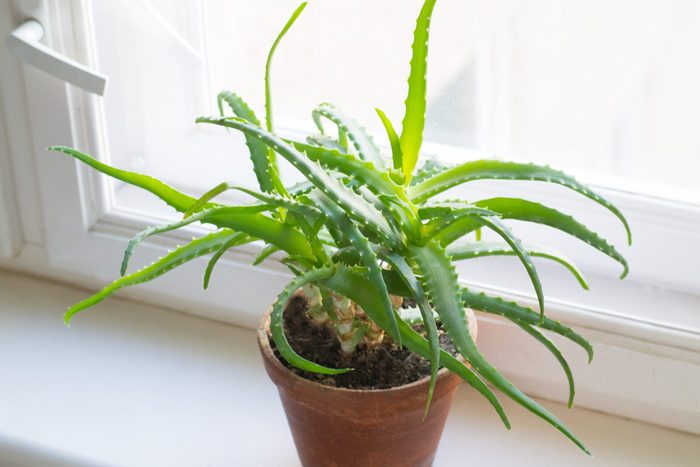
Aloe vera
Aloe barbadensis miller
Many people are familiar with aloe vera as a topical gel to put on sunburned skin. Although this succulent thrives in warm and hot climates and needs ample sunlight, aloe can be grown indoors if you have a space with a sunny window.
Aloe vera stands out with its long, often chartreuse-colored, sword-like leaves. Jessica Baker, registered herbalist, licensed acupuncturist and owner of Baker Botanica, says, “The gel inside the leaves can be applied topically for sunburns or skin irritations.” Another use for aloe you might not have been aware of? It can also “be taken internally to aid digestion and promote a healthy bowel movement,” explains Baker.
“Aloe gel is beneficial for wound healing of any sort,” Haynes adds. “This is thanks in part to aloe’s action on collagen formation, which is a base protein of many various tissues.”
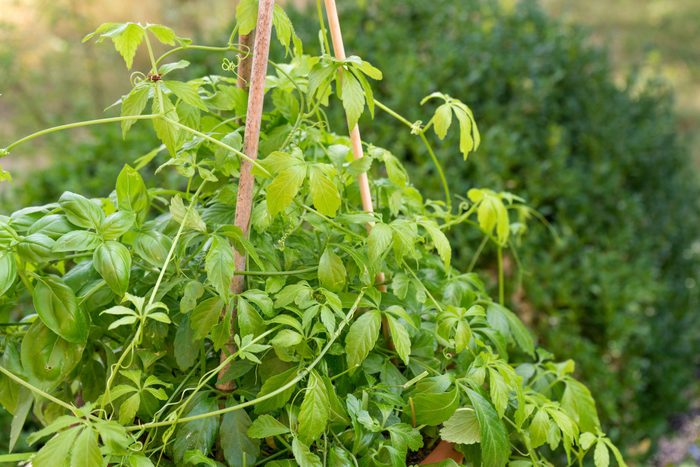
Jiaogulan
Gynostemma pentaphyllum
Jiaogulan, also known as “sweet tea vine,” is a vining plant that can grow indoors if it gets enough sunlight. Haynes explains that it “belongs to the Cucurbitaceae family, making it a cousin of butternut squash.” The leaves are commonly used to make tea. “You can clip the fresh leaves and make a daily tea, which will only invigorate the growth of your houseplant,” says Haynes.
Jiaogulan has similar properties to ginseng for brain function, but this plant is far easier to grow. “Jiaogulan contains many beneficial compounds, the most famous of which is ginsenosides … [that] support everything from mental clarity to longevity,” explains Haynes.
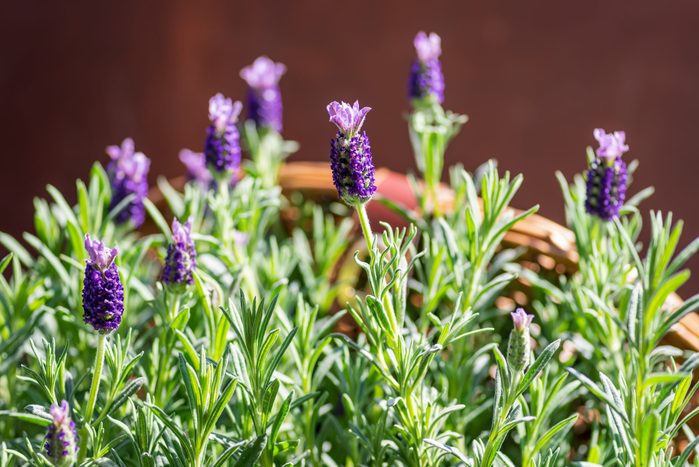
Lavender
Lavendula
Most people recognize lavender for its scent and purple flowers, since they’re often used as decoration as well as in aromatherapy. “Lavender is a medicinal plant that everyone should have,” Baker says, “for its relaxing and stress-reducing properties.” Lavender is typically grown outside, but this plant is adaptable: With the right conditions—lots of sunlight and warmth—it can be grown indoors, preferably near a window with direct light.
You can make an infusion with lavender, as well as add it to baked goods. Baker recommends using this plant sparingly in recipes, though, because “the taste can be soapy if you use too much in cooking or tea.”
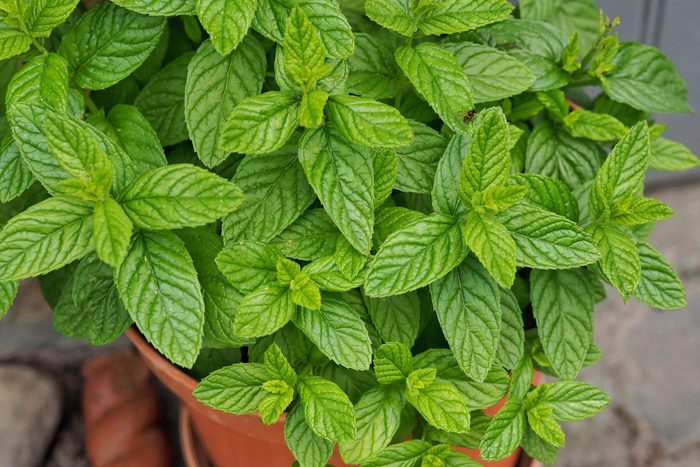
Mint
Mentha piperita
Mint is an easy herb to grow. In fact, it grows so well when it’s happy that it’s best in its own container, as mint will dominate whatever space it’s planted in. Mint comes in an array of varieties. “My favorite mints are yerba buena and chocolate mint,” says Baker. “Choose your favorite mint (or two), and add to a large pot.”
Mint tea is soothing and can help with digestion and other ailments. “Mints are great at reducing belching and bloating,” says Baker. “They can also vent rashes and reduce sore throats and fevers.”
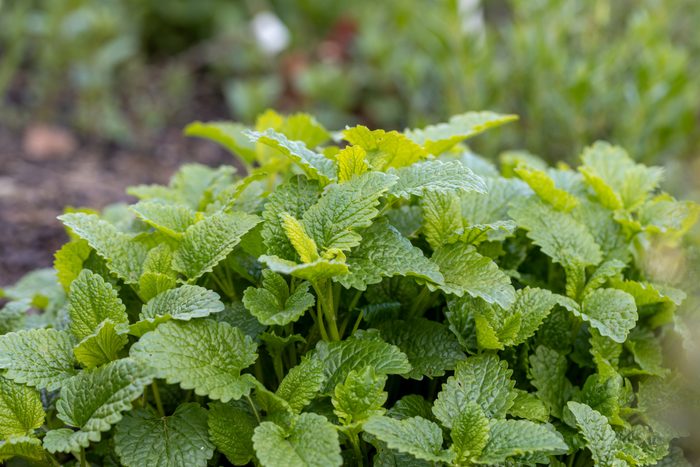
Lemon balm
Melissa officinalis
A member of the mint family, lemon balm has a fragrant lemon aroma. This herb can grow inside, preferably near a sunny window. Just be sure to plant it separately from other herbs and in its own pot, because lemon balm, like mint, will spread and take over the space.
Known as a calming plant, lemon balm may support relaxation, help improve sleep and ease minor digestive troubles. Its leaves can be sprinkled onto dishes or used to make a herbal infusion. “Lemon balm makes an excellent soothing cup of tea, and it can also be used in salads and syrups as well,” says clinical herbalist and holistic nutritionist Anna Marie Beauchemin, owner of East Bay Herbals in the San Francisco Bay area.
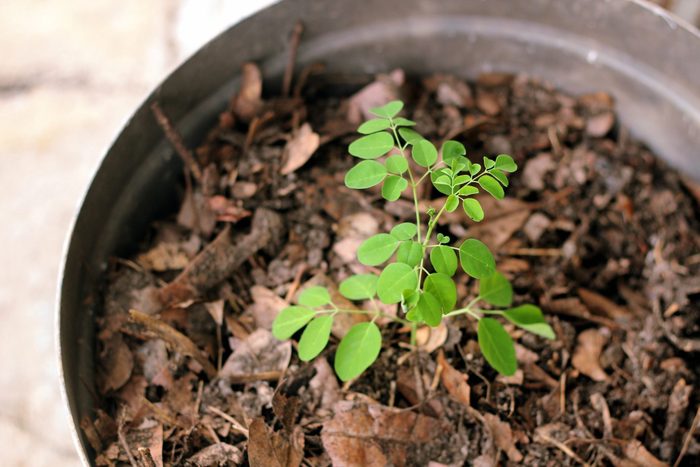
Moringa
Moringa oleifera
Moringa has been hitting the health aisles for its antioxidant properties, minerals, vitamins and array of potential benefits. “Moringa trees make really beautiful indoor plants,” says Haynes. “Ideally, you start them outside and give them plenty of light and heat to get established, then you can move them to a sunny south-facing window through the winter.”
Moringa trees are native to sub-Saharan Africa and Southeast Asia, and in many places, the leaves are considered an essential food source. “Its leaves are an atypical source of complete protein and a wide complement of vitamins and minerals, making it supportive for overall well-being and foundational nutrition,” says Haynes.
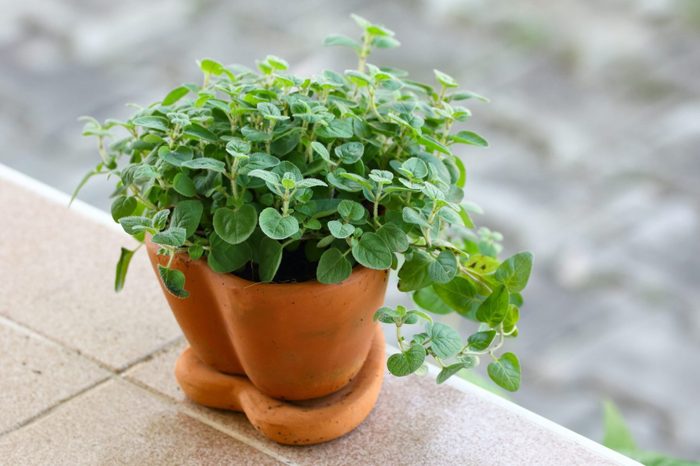
Oregano
Origanum vulgare
Oregano often comes to mind to shake onto pizza, a sub or tomato-based pasta dishes. But you get some added perks besides that zesty flavor: “Oregano is a carminative herb, so it’s good for digestive support,” Beauchemin says.
Oregano is easy to grow in a container—just make sure this medicinal plant receives plenty of sun. Snip the leaves when you’re ready to use it in a dish.
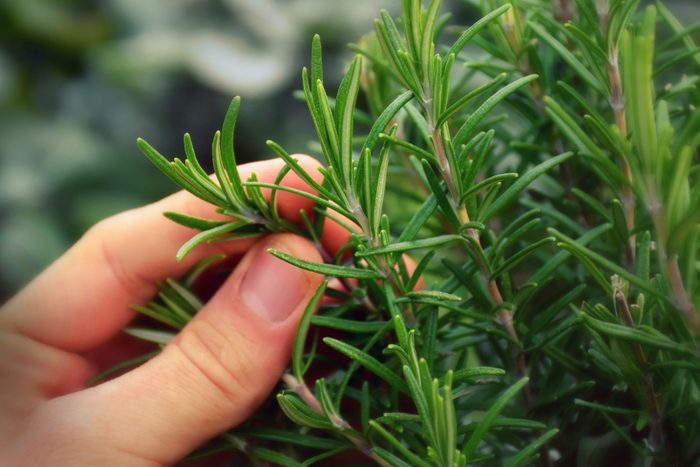
Rosemary
Rosmarinus officinalis
Rosemary is a hardy, Mediterranean shrub that loves lots of sun and warm temperatures. “Rosemary is also a favorite healing plant to grow indoors,” says Baker. Rosemary has properties that can relieve gas and bloating.
And although the long, narrow, pine-colored leaves are most often used, you can also eat rosemary’s flowers.
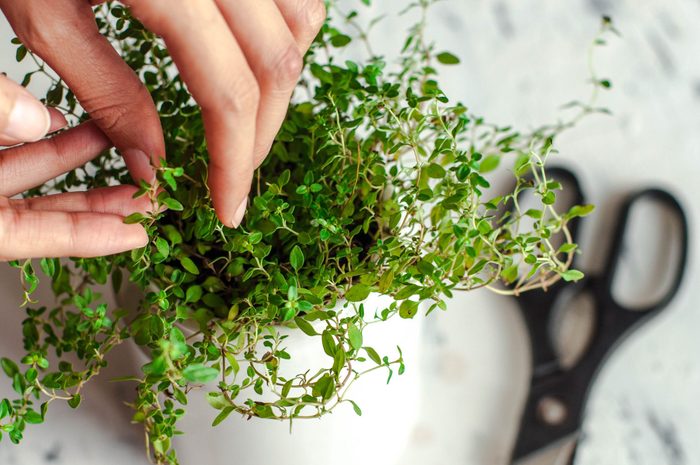
Thyme
Thymus vulgaris
Thyme is another hardy culinary herb that doubles as a medicinal herb. Thyme leaves can be used to make a soothing tea or sprinkled onto all kinds of dishes, soups or salads. “Thyme has been considered healing for thousands of years for its cold-relieving and digestive properties,” says Baker.
Thyme likes plenty of sun, so make sure you place thyme where it receives direct sunlight. “Thyme is extremely easy to grow if you have a window with a few hours of sun a day,” says Baker, who adds that there are a lot of varieties to choose from, from lemon thyme to creeping pink thyme.
About the experts
- Lauren Haynes is a clinical herbalist who trained at the Appalachian Center for Natural Health. She is the founder of Wooden Spoon Herbs.
- Jessica Baker is a registered herbalist, licensed acupuncturist and the owner of Baker Botanica. She is the author of Plant Songs: Reflections on Herbal Medicine.
- Anna Marie Beauchemin is a registered clinical herbalist and holistic nutritionist. She is also the owner of East Bay Herbals.
Source:
- International Journal of Environmental Research and Public Health: “Effects of Indoor Plants on Human Functions: A Systematic Review with Meta-Analyses”
